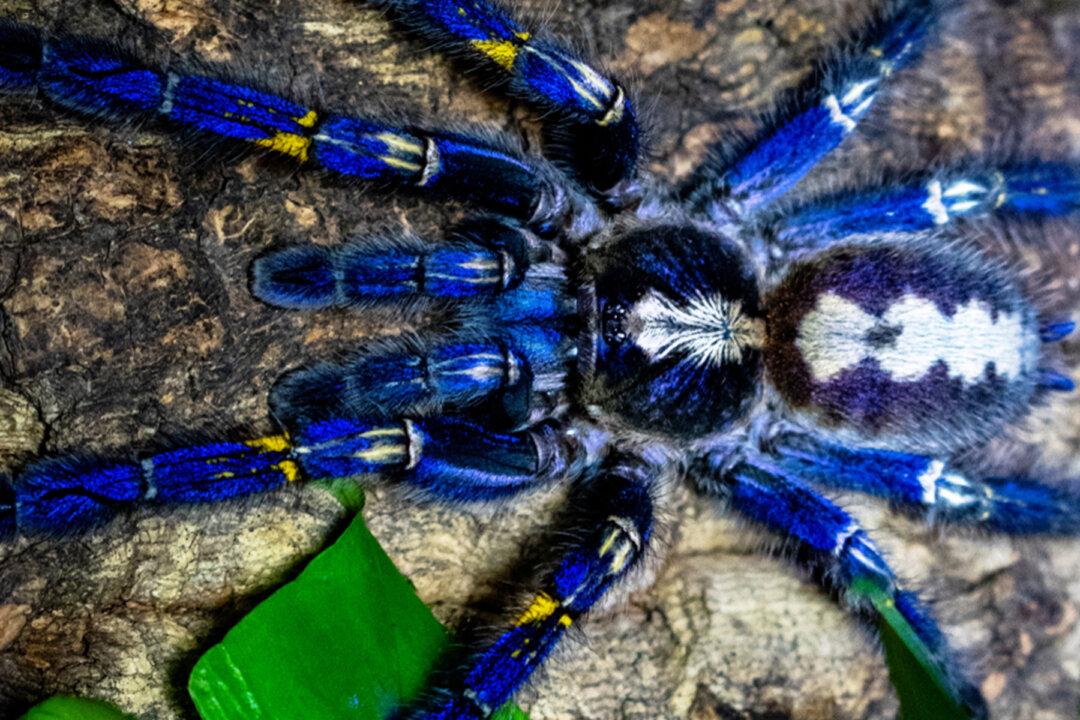The perennially photo-ready electric-blue peacock tarantula is breathtaking to behold. Its mesmerizing blue hue belies a painful poison, but despite its formidable capabilities, this stunning species may not be around forever.
This beauty from southern India has a plethora of monikers; known widely as the metallic blue peacock tarantula, scientific name Poecilotheria metallica, the spider was first discovered in southeastern India in 1899. The entire Poecilotheria genus is known for its eye-catching colors and patterns, but P. metallica is the only spider that sports such a striking electric blue.





